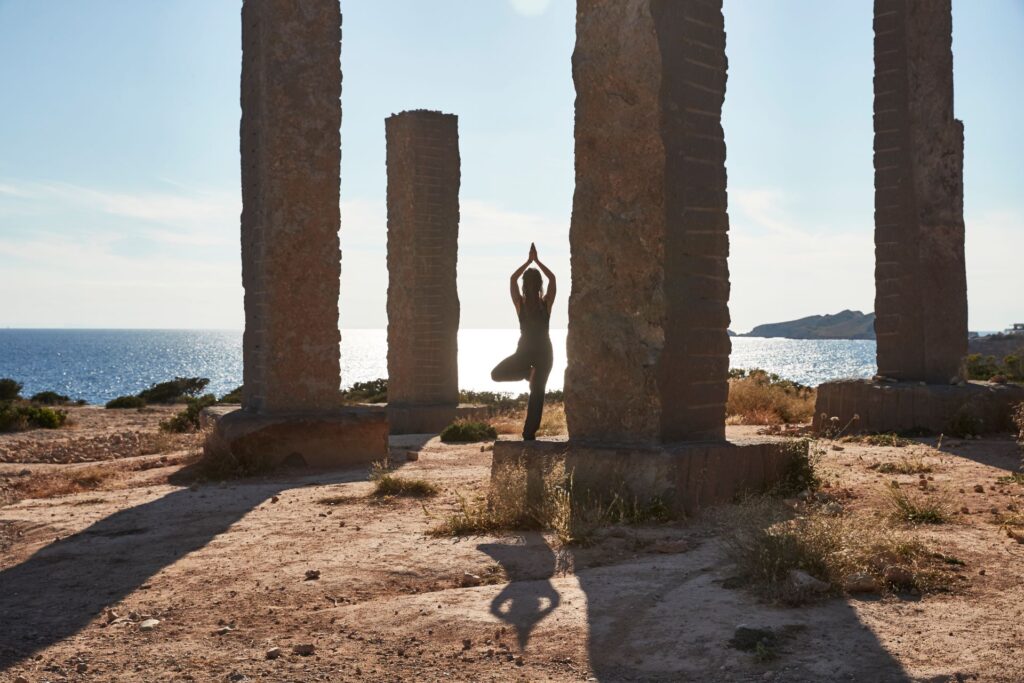Practicing yoga for breast cancer: Top poses to do

In my years living in ashrams and guiding many through the gentle art of yoga, I have seen firsthand how healing it can be, especially for those facing illness. Practicing yoga for breast cancer is a beautiful way to support the body, mind, and spirit during a challenging time. With care, patience, and the right poses, yoga offers a powerful tool for healing.
How can yoga help with breast cancer?
Yoga for cancer is becoming a highly recommended complementary therapy. It addresses the entire being, helping not just physically but also emotionally. Gentle yoga for breast cancer patients can improve flexibility, reduce stress, support immune function, and lessen the fatigue and anxiety that often accompany treatment.
Deep breathing techniques and mindful movement calm the nervous system, while restorative poses aid in better lymphatic drainage and circulation. Scientific studies have also shown that those practicing yoga for cancer experience better sleep and emotional resilience.
Importantly, yoga is not about pushing the body. It teaches acceptance and patience, offering a way to reconnect with oneself after the often-overwhelming journey through diagnosis and treatment.
Top yoga poses for breast cancer
Choosing the right yoga poses is essential for supporting recovery and maintaining energy. The following poses are gentle, accessible, and beneficial for those practicing yoga for breast cancer.
Cat-Cow stretch
The Cat-Cow stretch is a soft, rhythmic movement that warms up the spine and opens the chest. Start on your hands and knees, aligning your wrists under your shoulders and your knees under your hips. As you inhale, lift your head and tailbone toward the sky, letting the belly drop (Cow). As you exhale, round your back, tucking the chin toward the chest (Cat).
This movement helps in gently mobilizing the spine, encouraging lymphatic flow, and opening the heart space- an important area that can feel tight after surgery or radiation. It is a grounding exercise that brings awareness back to the breath and body.
Warrior II
Warrior II is a strong, empowering pose. Stand with feet wide apart, turning one foot out to a 90-degree angle and bending the knee above the ankle. Extend your arms out to the sides, gaze over the front hand, and sink into the pose.
Practicing Warrior II strengthens the legs, opens the chest, and builds stamina. For those undergoing yoga for cancer treatments, it also offers a sense of resilience and grounded strength. Modifications, like reducing the depth of the bend, ensure the pose remains accessible.
Child’s pose
Child’s Pose is the ultimate resting posture. Kneel on the mat, bring your big toes to touch, and sit back on your heels. Extend your arms forward, forehead resting on the mat. If needed, a bolster or pillow under the chest offers extra support.
This pose gently stretches the back, shoulders, and hips while calming the mind. It is a sanctuary of stillness, helping to relieve fatigue and emotional strain. In yoga for breast cancer, Child’s Pose becomes a safe space to rest, reconnect, and rejuvenate.
Seated spinal twist
A seated spinal twist offers a gentle detox for the body and maintains spinal mobility. Sit with legs extended, bend the right knee, and cross it over the left leg. Place the right hand behind you and the left elbow outside the right knee. With each inhale, lengthen the spine; with each exhale, twist a little deeper.
This pose aids digestion, improves circulation, and releases tension around the chest and ribs. For those practicing yoga after breast cancer, it provides a feeling of gentle expansion and release without strain.
Why should you practice yoga after breast cancer?
The journey does not end with the last treatment. Practicing yoga after breast cancer supports long-term recovery and wellness. Many survivors experience lingering fatigue, stiffness, and emotional ups and downs. Gentle, mindful yoga helps in regaining physical strength, restoring range of motion- especially after surgery- and rebuilding a positive connection with the body.
Moreover, yoga for cancer survivors promotes emotional healing. It offers tools to cope with fear, anxiety, and changes in body image. It encourages acceptance, self-love, and a sense of peace that supports continued recovery.
Every breath, every stretch is a reminder of life’s preciousness and resilience. Practicing yoga after breast cancer is not merely about physical exercise- it is about stepping into a new chapter of life with grace, strength, and joy.




